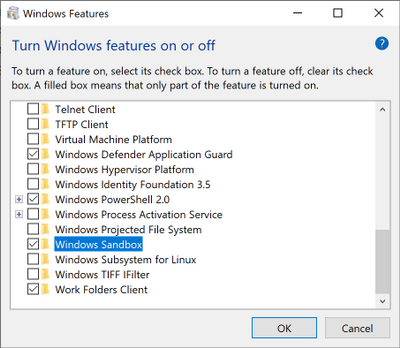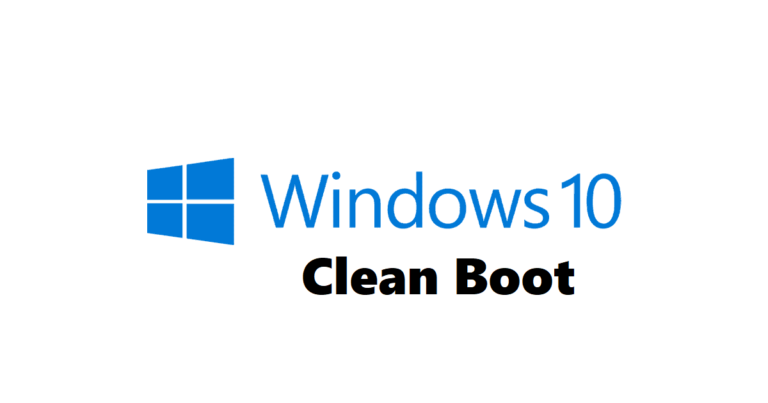Introduction
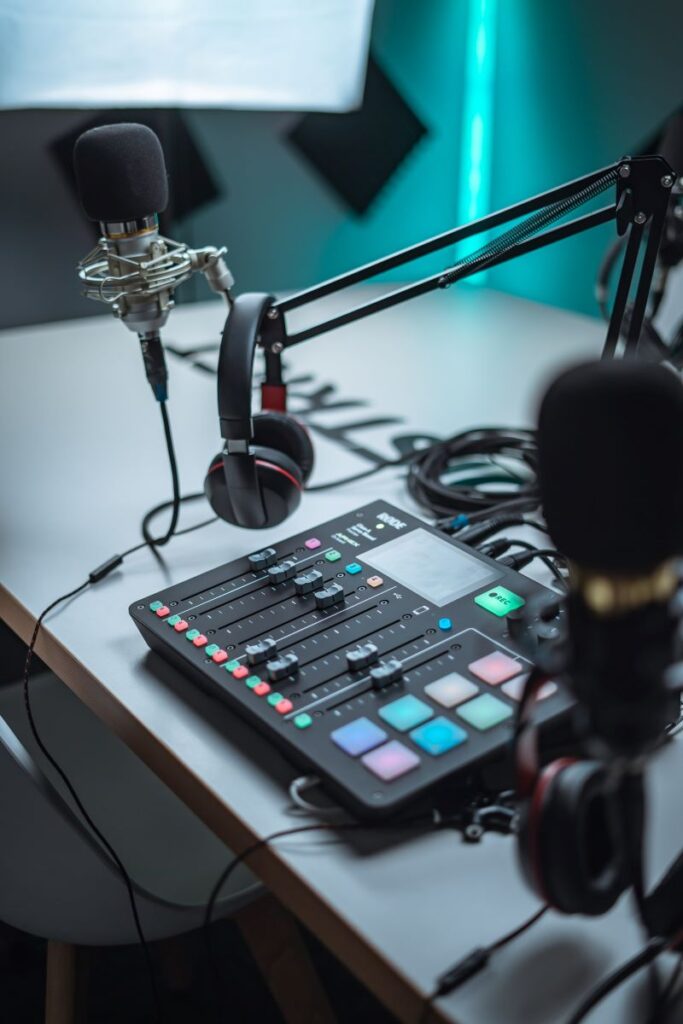
Ever been captivated by the narrative of the podcast Serial? It’s a true crime story that enraptured millions globally. If you’ve toyed with the idea of starting your podcast, you’re at the threshold of an exciting venture. This guide is your compass in the realm of podcasting. Unveiling the A to Z of how to make a podcast, we’ll traverse through choosing a riveting topic, picking the right equipment, to promoting your narrative in the digital wilderness. So, clutch that cup of coffee, and let’s unravel the tapestry of podcast creation, helping you broadcast your unique echo in the cacophony of digital voices.
Pre-Production
Idea Generation
Embarking on the journey of how to make a podcast begins with a single step – nurturing a unique, engaging topic. Your podcast’s theme is the seed from which everything else grows, it’s the heart that pumps life into your narrative. Now, you might wonder, where do I seek inspiration? Look no further than your own life. Your personal experiences, interests, or even your quirky hobbies can germinate into a compelling podcast theme. Whether you’re a culinary whizz, a history buff, or a globetrotter, your unique lens is a treasure trove of ideas. Your podcast could be the bridge between your passion and the curiosity of a world of listeners. So, delve deep into your interests, and you might just find a goldmine of topics waiting to be aired.
Audience Research
Stepping into the world of podcasting without understanding your audience is like sailing without a compass. The essence of how to make a podcast radiantly engaging lies in tailoring it to resonate with your listeners. Delving into audience research, you unveil the preferences, demographics, and desires of your potential listeners. Are they novices or aficionados in your domain? Knowing this shapes the depth and language of your discourse. Furthermore, demographic insights like age or occupation can serve as a lens through which you refine your content. It’s a two-way street; your podcast enriches listeners, and their feedback, in turn, propels your podcast to resonate deeply. So, delve into the realm of audience research it’s your lodestar in the captivating journey of podcast creation.
Naming and Branding
In the bustling marketplace of podcasts, a catchy name is your first hook. It’s what piques curiosity amidst a sea of choices. A memorable name coupled with coherent branding creates a distinct identity, a visual and auditory signature for your audience. Have you pondered how a compelling name, like ‘Serial,’ can reel listeners in? It’s not just a name; it’s an invitation, a promise of a journey. Coherent branding extends this identity, creating a familiar space for your listeners. As you delve into how to make a podcast, remember, that a captivating name and consistent branding aren’t just superficial elements they are the enticing cover to your auditory book.
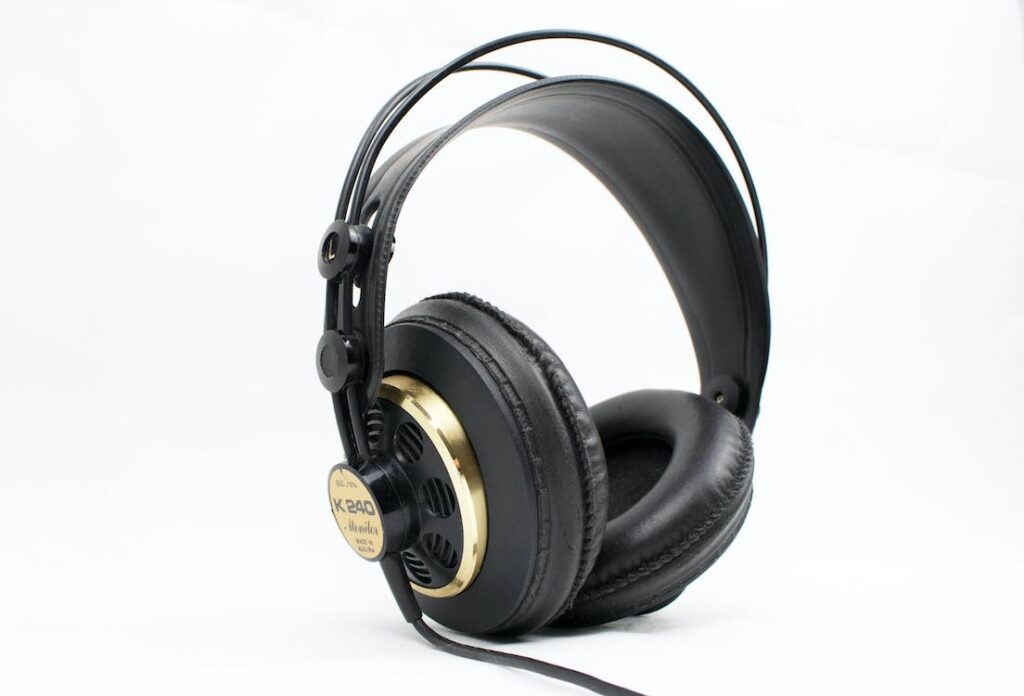
Essential podcasting equipment:
- Microphone: A good microphone is essential for capturing high-quality audio for your podcast. There are two main types of microphones: dynamic and condenser.
- Dynamic microphones are more durable and less sensitive to background noise, making them ideal for recording in less-than-perfect environments.
- Condenser microphones are more sensitive and can capture more detail, but they are also more susceptible to background noise.
- Audio interface: An audio interface is a device that connects your microphone to your computer. It allows you to record high-quality audio and adjust the levels of your microphone and other audio sources.
- Headphones: Headphones are essential for monitoring your audio levels and ensuring that your podcast sounds good. It is important to choose headphones that are comfortable to wear for long periods.
- Pop filter: A pop filter helps to reduce plosives, which are the harsh sounds that can occur when pronouncing certain consonants, such as “p” and “b.”
- Mic stand: A mic stand helps to keep your microphone in place and prevents it from picking up unwanted noise.
Budget-friendly options for beginners:
All the below are available on Amazon but it may be worth shopping around or looking on secondhand marketplaces if your budget is tight
- Microphone:
- Audio interface:
- Headphones:
- Pop filter:
- Mic stand:
In addition to the essential equipment listed above, there are a few other items that you may want to consider purchasing, such as:
- Boom arm: A boom arm allows you to position your microphone closer to your mouth, which can help to improve audio quality.
- Software: There are several different podcasting software programs available, both free and paid. Some popular options include Audacity, GarageBand, and Adobe Audition.
- Hosting: Once you have recorded and edited your podcast, you will need to find a place to host it. There are a number of different podcast hosting providers available, such as Buzzsprout, Podbean, and Anchor.
When choosing podcasting equipment, it is important to consider your budget and your needs. If you are just starting out, it is not necessary to purchase the most expensive equipment. You can start with a basic setup and upgrade as needed.
Hosting a Podcast:
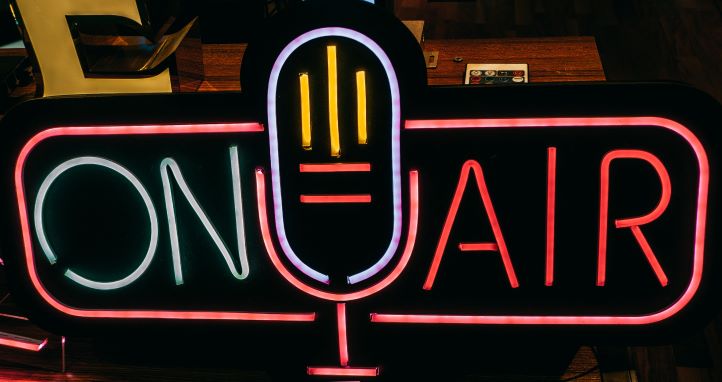
So we know how to make a podcast but now we need to host it. Hosting is your podcast’s home, the hub from which your episodes are shared with the world. It’s where your podcast files are stored and distributed to platforms like Apple Podcasts, Spotify, and others. Choosing a reliable hosting platform is critical as it affects your podcast’s accessibility and user experience. Some popular hosts are Libsyn, Podbean, and Anchor. They offer various plans based on your needs, including analytics to track your podcast’s performance. When considering hosting platforms, evaluate their uptime, bandwidth, analytics, and integration with podcast directories. With a solid host, your podcast is well on its way to reaching ears worldwide.
- Choose a Hosting Platform: Select a platform like Libsyn, Podbean, or Anchor based on your budget and needs. Below are some things to think about when choosing your hosting
- Storage space: How much storage space do you need for your podcast files?
- Bandwidth: How much bandwidth do you need? Bandwidth is the amount of data that can be transferred over a network at a given time. If you expect to have a large number of listeners, you will need a podcast hosting provider that offers high bandwidth.
- Features: What features are important to you? Some podcast hosting providers offer additional features, such as analytics, social media integration, and monetization options.
- Pricing: How much are you willing to pay for podcast hosting? Podcast hosting plans typically range in price from £5 to £20 per month.
- Upload Your Episodes: Use the platform’s dashboard to upload your podcast episodes and enter metadata like title, description, and tags.
- Distribute Your Podcast: Submit your podcast’s RSS feed to directories like Apple Podcasts, Spotify, and Google Podcasts for wider reach.
- Monitor Analytics: Use the analytics provided by your hosting platform to track downloads, listener demographics, and episode performance.
- Promote Your Podcast: Share your podcast episodes on social media, your website, and other channels to grow your audience.
These steps in how to make a podcast lay the foundation for hosting your podcast and ensuring it reaches your desired audience.
Production
Recording
Diving into the heart of how to make a podcast, recording is where your preparation meets action. Sound quality is the golden fleece here, and achieving that crystal clarity isn’t a Herculean task. Ever been swept away by the crisp, clear audio of professional podcasts? It’s not magic, but a blend of good gear and technique. Here are some tips:
- Pop Filter: Plosives are harsh sounds produced when pronouncing letters like ‘p’ and ‘b.’ A pop filter softens these, enhancing audio clarity.
- Quiet Room with Good Acoustics: Background noise distracts listeners. A quiet room with fewer echoes ensures your message remains unscathed.
- Clear, Slow Speech: Speaking clearly and at a moderated pace ensures listeners can catch every word, making your podcast more engaging.
- Regular Breaks: Continuous talking can strain your voice, impacting audio quality. Breaks rejuvenate your vocal cords, maintaining a pleasant, clear voice throughout.
Interviewing Guests
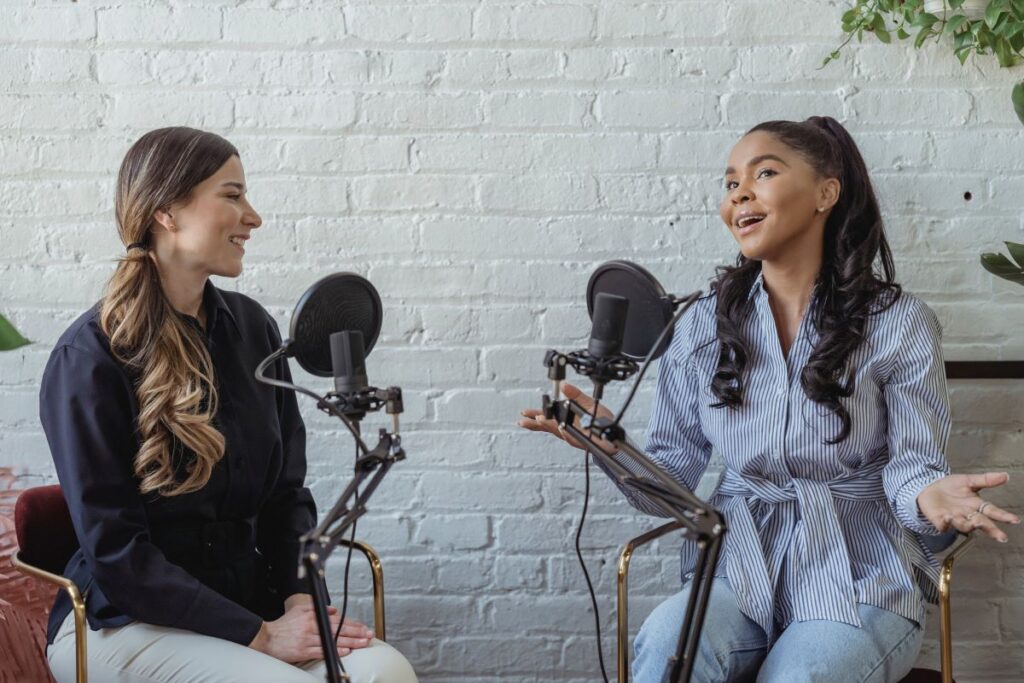
When the narrative of your podcast intertwines with the insights of guests, a new layer of intrigue is added to your auditory tapestry. Interviewing guests isn’t merely about having a conversation; it’s about orchestrating a dialogue that piques interest, provides value, and flows harmoniously. Whether you’re chatting with experts, enthusiasts, or individuals with stirring stories, the essence of engaging interviews lies in preparation and the ambiance you create. As a budding podcaster, mastering the art of interviewing can significantly elevate the quality and appeal of your episodes. So, how do you maneuver through the nuances of conducting compelling interviews? Let’s unravel the steps to make your guest episodes a listener’s delight.
- Research: Dive deep into your guests’ profiles. Understanding their work, previous interviews, and viewpoints can guide your conversation into engaging terrains.
- Question List: Craft a mix of broad and specific questions. This prepares you for a structured yet flexible conversation, allowing exploration while staying on track.
- Impromptu Follow-ups: As your guest speaks, intriguing points may arise. Don’t hesitate to divert slightly from your prepared questions to delve deeper into interesting topics.
- Comfortable Environment: Ensure a quiet, relaxed setting. Offer water or coffee, and start with light chatter to ease nerves. This sets a friendly tone, encouraging a more open, genuine conversation.
Editing
The alchemy of turning raw recordings into captivating podcasts happens in the editing room. A well-edited podcast not only sounds professional but keeps your listeners glued. Here’s a more detailed breakdown of editing tips:
- Noise Removal & Pauses: Utilize the noise reduction feature in editing software to eliminate background hums or buzzes. Also, trim awkward pauses to maintain a conversational rhythm.
- Volume Levels: Ensure a consistent volume across your podcast. Use the normalization feature to achieve a balanced sound, making it pleasant for your listeners.
- Sound Effects & Music: Add musical intros, outros, or sound effects judiciously to emphasize points or transition between segments.
- Transitions: Utilize smooth transitions to guide your listeners from one segment to another, keeping them engaged throughout.
- Editing Software Familiarity: Get comfortable with your editing software. Knowing its features can significantly expedite the editing process.
- Use of Equalization: Apply equalization to enhance your audio’s clarity and quality.
- Intro and Outro: Having a standard intro and outro can create a professional feel and brand consistency across episodes.
- Feedback: Seek feedback on your edits from trusted colleagues or beta listeners to understand areas of improvement.
- Save Frequently: Ensure you save your work frequently to avoid any loss of progress.
- Editing Services: If editing is too daunting, consider hiring a professional editing service.
Remember, each edit enhances the listeners’ experience, keeping them tuned in.
Post-Production
Promotion

Stepping into the post-production phase of how to make a podcast, promotion is your golden key to building an audience. Imagine crafting a masterpiece and having no one to appreciate it. That’s where promotion, especially via social media, comes into play. Social media isn’t just a platform it’s a bustling marketplace where your podcast can find its tribe. With the right strategies, social media can catapult your podcast from obscurity into the limelight. It’s a dynamic arena where you can share your episodes, interact with listeners, and even spark discussions around your podcast’s themes. In the digital age, social media isn’t just an option; it’s a game-changer for your podcast’s growth and engagement.
- Hashtags: Utilize relevant hashtags on social media to tap into existing conversations.
- Community Engagement: Connect with other podcasters and engage in podcasting communities.
- Podcast Directories: Submit your podcast to directories like Apple Podcasts and Spotify to reach a broader audience.
- Website: A dedicated website for your podcast acts as a central hub where listeners can explore episodes, learn about you, and subscribe for updates.
- Collaborations: Team up with other podcasters or influencers in your field for shoutouts or guest appearances.
- Email Marketing: Build a mailing list to share new episodes, blog posts, or other content related to your podcast.
- SEO Optimization: Optimize your podcast’s website with relevant keywords to rank higher on search engines.
- Paid Advertising: Invest in social media ads to reach a broader audience.
- Engaging Content: Create engaging posts or share behind-the-scenes content to build a connection with your audience.
- Local Promotions: Engage with local communities or events to promote your podcast.
Engagement
Crafting a podcast is akin to starting a conversation. Yet, the dialogue shouldn’t end when your episode does, it should echo in the hearts and minds of your listeners. Engaging with your audience and fostering a community isn’t just about boosting numbers; it’s about creating a space where ideas germinate, discussions flourish, and a shared sense of belonging thrives. Listener engagement transforms your podcast from a monologue into a discourse, enriching not only your audience but also your understanding and perspective. It’s the bridge that connects you to your listeners, making your podcast a shared journey rather than a solitary endeavor.
- Social Media Interaction: Reply promptly, share listener posts, and create polls or discussions.
- Live Q&A Sessions: Address listener questions, discuss episodes, and possibly invite guests.
- Community Forum/Discord Server: Facilitate discussions, share exclusive content, and hold community events.
- Contests and Giveaways: Reward engagement, share user-generated content, and celebrate milestones.
- Feedback Surveys: Collect and act on feedback to improve your podcast.
- Newsletter: Share updates, and behind-the-scenes content, and engage with listeners on a personal level.
- Listener Shoutouts: Acknowledge dedicated listeners during episodes to foster a tight-knit community.
Monetization

So we know how to make a podcat and we know how to host and promote it. What next? Venturing into podcasting can be thrilling, but have you considered transforming this passion project into a revenue stream? Monetization in podcasting is a realm teeming with potential. It’s not merely about earning; it’s about fueling your podcast’s growth, enhancing production quality, and perhaps even morphing this hobby into a full-time endeavor. As you explore monetization strategies, you unlock avenues to not only sustain but also expand your podcast. Whether through sponsorships, affiliate marketing, premium content, or crowdfunding, monetization is a game-changer, intertwining your podcasting passion with financial sustainability.
- Sponsorships:
- Identify brands that align with your podcast’s theme.
- Craft a persuasive pitch highlighting your audience demographics and engagement rates.
- Offer varied sponsorship packages like pre-roll, mid-roll, or post-roll ads.
- Affiliate Marketing:
- Partner with companies offering products or services relevant to your content.
- Promote these in your show notes or during episodes.
- Utilize tracking links to earn commissions on sales generated through your referrals.
- Premium Content:
- Offer early access to new episodes, ad-free episodes, or exclusive content to subscribers.
- Platforms like Patreon can host your premium content.
- Crowdfunding:
- Launch campaigns for specific projects or ongoing support.
- Offer enticing rewards for backers, like merchandise or personalized shoutouts.
Conclusion
So we started off asking how to make a podcast and by the end of this article you should now be set to start your podcasting journey. Each method requires a tailored approach. Analyze which mix of these strategies resonates with your podcast and audience, and you’ll be well on your way to monetizing your passion project!
This article journeyed through the meticulous process of podcasting. From nurturing a unique topic, and understanding your audience, to the technical realm of equipment and software, each step is pivotal. Recording, interviewing, and editing are the core of podcast crafting while promoting and engaging with listeners extends its reach. Monetization opens doors to financial sustenance, making podcasting a viable passion project. Though daunting initially, with the right guidance, podcasting is within reach. Ready to let your voice resonate? Venture into our website for more resources, and embark on this enthralling podcasting voyage. Your audience awaits!





